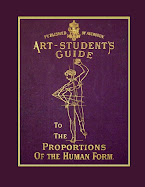Figure 22. The man carrying a weight on his shoulders illustrates how weight is balanced when a figure is carrying an object, as the caption states the entire weight of the object and of the man is balanced over a vertical line drawn through the foot which supports most of the weight. The figure bends slightly in a contrapposta pose in order to balance the weight. The right leg supports the weight, the left leg is thrown slightly away from the body. He raises the left hip and lowers the right to offset the weight. An imaginary line may be drawn between the weight on the man's shoulder and his right heel to demonstrate the center of gravity.
Translation:
CAP. CC. A Man carrying a weight on top his shoulders.
The man's shoulder that supports the weight is always higher than the shoulder without weight, and this is shown in the figure (Fig. 22.), the weight of the entire man and the weight he carries passes through the center line which passes through the center of the leg which bears the weight, the entire composition would be ruined if it did not do so, you need to ensure that the natural weight of the man is thrown to the side to equal the weight which he is carrying, you cannot do this if the man does not bend and does not lower his lighter side, and you cannot do this if the shoulder that bears the weight does not raise. By this means the artifice is found to illustrate this action.
CAP. CC. Dell'uomo che porta un peso sopra le sue spalle.
Sempre la spalla dell'uomo che sostiene il peso è più alta che la spalla senza peso , e questo si mostra nella figura , (Fig. 22.), per la quale passa la linea centrale di tutto il peso dell' uomo , e del peso da lui portato; il qual peso composto se non fosse diviso con egual somma sopra il centro della gamba che posa , sarebbe necessità che tutto il composto rovinasse: ma la necessità provvede che tanta parte del peso naturale dell' uomo si getta da un de'lati, quanto è la quantità del peso accidentale che si aggiunge dal 'opposito lato; e questo far non si puo se l'uomo non si piega e non s'abbassa dal lato suo più lieve con tanto piegamento che partecipi del peso accidentale da lui portato; e questo àr non si può se la spalla del peso non si alza , e la spalla lieve non s'abbassa . E questo è il mezzo che l'artilìziosa necessità ha trovato in tale azione.
Figure 23. The posture of a man balancing on one foot illustrates how weight is balanced over the point of support of the human body. Notice that since the wight is on the left foot, the right leg is positioned further out as is the right arm, the torso compensates by leaning to the left so that the weight of the body is distributed equally above the support on the ground. The thin vertical line in the print shows the center of gravity.
Translation:
CAP. CCI. The weight of man distributed over his feet.
The center of gravity determines that the weight of the man who balances on a single leg will distribute his weight equally in order to balance. (Fig.23.).
CAP. CCI. Della ponderazione dell'uomo sopra i suoi piedi.
Sempre il peso dell'uomo che posa sopra una sol gamba sarà diviso con
egual parte opposita sopra il centro della gravità che sostiene (Fig. 23.) .
Figure 24. A figure in motion walking and carrying a weight shows a figure in movement. In movement the weight of the figure, and the weight he carries shifts from side to side to remain above the center of the leg and foot that support the weight. The thin line in the engraving shows the center of gravity between the weight on the figure's shoulder and his left heel.
Translation:
CAP. CClI. A Man that moves.
The man who moves has the center of gravity above the center of his leg on the ground (Fig. 24).
CAP. CClI. Dell'uomo che si muove.
L'uomo che si muove arà il centro della sua gravità sopra il centro della gamba che posa in terra (Fig. 24.)
Figure 25. The posture of a motionless standing figure demonstrates the contrapposta pose again. This time the stationary figure distributes his weight unequally between the two legs depending on the thrust of his torso. In this figure the right leg gets most of the weight, while the left leg aids his balance.
CAP. CCIII. The balance of the weight of any figure motionless on the legs.
The stance of any motionless figure arises from the unequal distribution of weight over the legs.(Fig.25.).
CAP. CCIII. Della bilicazione del peso di qualunque animale immobile sopra le sue gambe.
La privazione del moto di qualunque animale, il quale posa li suoi piedi, nasce dalla privazione dell' inegualità che hanno infra loro oppositi pesi che si sostengono sopra i lor pesi (Fig. 25.).
Trattato Della Pittura (Italian Edition) a free edition at Google Books.
Related books:
The Art Student's Guide to the Proportions of the Human Form at Google eBooks
Leonardo da Vinci on the Human Body: The Anatomical, Physiological, and Embryological Drawings of Leonardo da Vinci
Leonardo da Vinci. The Anatomy of Man, Drawings from the Collection of Her Majesty Queen Elizabeth II


Comic Artist's Photo Reference - People & Poses: Book/CD Set with 1000+ Color Images (Comic Artists Reference)
1,000 Poses in Fashion (1000)






















I love your article. you can visit my website :thope tv
ReplyDelete